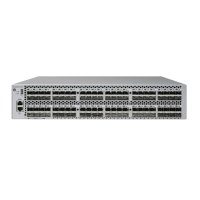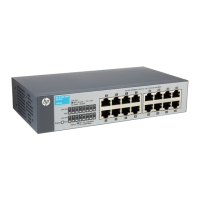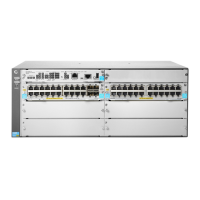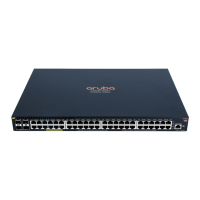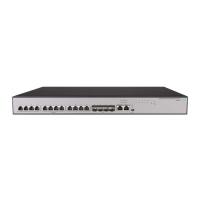107
PVST configuration example
Network requirements
As shown in Figure 16, Device A and Device B work at the distribution layer, and Device C and
Device D work at the access layer.
Configure PVST to meet the following requirements:
• Packets of a VLAN are forwarded along the spanning trees of the VLAN.
• VLAN 10, VLAN 20, and VLAN 30 are terminated on the distribution layer devices, and VLAN
40 is terminated on the access layer devices.
• The root bridge of VLAN 10 and VLAN 20 is Device A.
• The root bridge of VLAN 30 is Device B.
• The root bridge of VLAN 40 is Device C.
Figure 30 Network diagram
Configuration procedure
1. Configure VLANs and VLAN member ports. (Details not shown.)
{ Create VLAN 10, VLAN 20, and VLAN 30 on both Device A and Device B.
{ Create VLAN 10, VLAN 20, and VLAN 40 on Device C.
{ Create VLAN 20, VLAN 30, and VLAN 40 on Device D.
{ Configure the ports on these devices as trunk ports and assign them to related VLANs.
2. Configure Device A:
# Set the spanning tree mode to PVST.
<DeviceA> system-view
[DeviceA] stp mode pvst
# Configure the device as the root bridge of VLAN 10 and VLAN 20.
[DeviceA] stp vlan 10 20 root primary
# Enable the spanning tree feature globally and in VLAN 10, VLAN 20, and VLAN 30.
[DeviceA] stp global enable
[DeviceA] stp vlan 10 20 30 enable
3. Configure Device B:
# Set the spanning tree mode to PVST.
<DeviceB> system-view
[DeviceB] stp mode pvst
G
E
1
/
0
/
1
G
E
1
/
0
/
1
G
E
1
/
0
/
1
G
E
1
/
0
/
1

